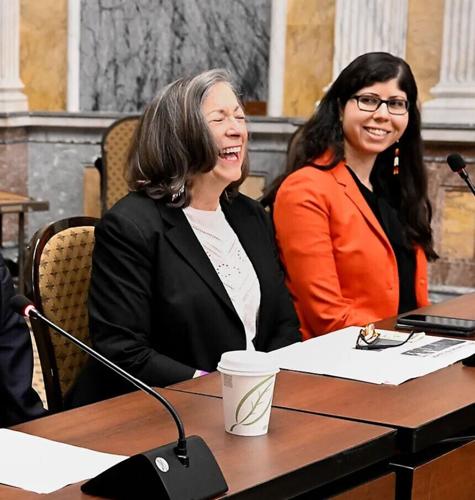House GOP Oversight Chair Blasted for Attacking President Biden’s Deceased Son
MARCH 2, 2023

MAGA Republican Oversight Committee Chair James Comer is being blasted from all corners for his despicable attack on President Biden’s deceased son, with veterans calling on Comer to apologize to the Biden family, and military members and veterans, for disparaging Beau Biden’s service and legacy.
Here’s a look at what they’re saying:
“Unacceptable that @RepJamesComer would attack the character of the late Beau Biden, who served with courage and distinction. We’re calling on Rep. Comer to issue an apology to the Beau Biden family, and our military families, for disparaging his service and legacy.”
Daily Beast: House Oversight Chair Laments That Joe Biden’s Dead Son Was Never Prosecuted
“House Oversight Committee Chairman James Comer invoked the late son of President Joe Biden on Tuesday, lamenting that Beau Biden was never prosecuted over an investigation into illegal contributions involving his father’s 2008 presidential campaign. […] Comer’s invocation of the president’s late son runs contrary to the GOP congressman’s repeated claims that he’s not interested in digging into any Bidens but the president himself.”
Washington Post: White House slams ‘despicable’ suggestion Beau Biden should have been indicted
“Rep. James Comer (R-Ky.) criticized a Trump-appointed U.S. attorney for not prosecuting President Biden’s late son when he was still alive, a notion the White House slammed as ‘despicable.’”
HuffPost: White House Slams Republican’s ‘Incredibly Ugly’ Remark About Biden’s Late Son
“When asked about the remarks during Wednesday’s press briefing, White House press secretary Karine Jean-Pierre said, ‘It says a lot about the chairman, which is not good, by the way.’
‘To make the statement that he did is incredibly ugly and inappropriate,’ she added.
“Instead of House Republicans focusing on attacking the president and his family, why don’t they actually focus on what the American people put them in office to do, which is to deliver for them, which is to actually work with their colleagues … to actually put forth pieces of legislation or put forth policies that’s going to make a difference in their lives,” Jean-Pierre continued.”
MSNBC: White House slams GOP’s Comer over comments about Beau Biden
“It’s no secret that the Oversight Committee chairman appears fixated on the president’s family, but given the Kentuckian’s latest comments, it seems Comer should choose a new hobby.”
“The White House on Wednesday tore into Republican Rep. James Comer’s ‘ugly’ and ‘despicable’ claims that President Joe Biden’s dead son Beau should have been indicted alongside a Delaware man who violated campaign finance laws. […] A request for comment from Comer’s office has yet to be returned.”
American Independent: Rep. James Comer criticizes U.S. attorney for not investigating Biden’s dead son
“The House Oversight Committee chair’s comments about Beau Biden are the latest in the House Republicans’ search for dirt on the Biden family.”
“On a human level, that’s appalling. It’s despicable. And frankly it says quite a lot – none of it good – about James Comer.”
“Disgusting new low for the MAGA Republican majority.”
“This is disgraceful and Comer should be ashamed. Beau Biden served this country honorably and died years ago of brain cancer. I know Republicans have a feverish hatred of the President but this is completely unacceptable.”
“For this congressman… to smear a dead war hero because his name is Biden- despicable doesn’t seem a strong enough word about it. This is one of those have you no shame moments.”
“Their mission – Comer just expressed it with the phrase – ‘to go after the Bidens.’ …It’s pretty simple, that’s their mission. They’re not interested in governing, they’re not interested in issues that affect you, other people around this country every single day, their families, their kid’s schools, school lunch programs, Social Security, none of those liveable issues. They’re not interested in it, their mission is to go after the Biden’s. Dead or alive.”














